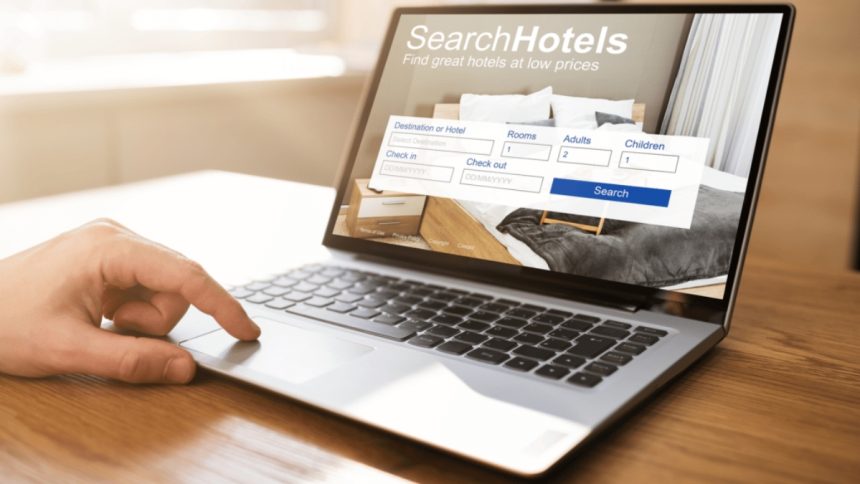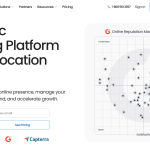Your business’s ability to effectively manage its Google ads budgetgreatly influences the outcomes of your campaigns. Almost every business today uses digital marketing to reach its intended audience, and businesses in the ecosystem are constantly brainstorming ways to balance their expenses and returns.
The most significant challenges in the process are fluctuating market dynamics, intense competition, and inflated costs-per-click, which together often lead to inefficiencies. However, if strategized well, businesses can transform their Google ads budget managementinto a well-oiled machine for driving significant ROI, offering a promising outlook for your advertising efforts.
Today’s guide will shed light on seven of the top Google ads budgetoptimization tips, enriched with technical insights, the role of professional google ppc advertising service providersin delivering success, and some real-world examples. Take a look:
1. Initiate with a comprehensive keyword strategy
Keywords are the backbone of PPC adscampaigns. Hence, poor keyword selection can quickly drain the Google ads budget by yielding negligible returns and targeting irrelevant audiences. A properly planned keyword strategy ensures better ad performance and high-quality traffic.
Tips for you:
- Exact match and broad match keywords: Use exact match keywords for pinpoint targeting and phrase match for audience exploration.
- Negative Keywords: Keep updating your negative keyword list to filter out irrelevant searches. WordStream says negative keywords can save a business nearly 20% of its PPC budget managementannually.
- Long-Tail Keywords: These high-intent, low-competitive keywords convert better and often cost less.
Example: Petco, a globally renowned pet goods supplier retailer, once focused on the keyword ‘organic dog food near me.’ The keyword reduced their CPC by nearly 25% and increased their conversion rate by nearly 18%, hence optimizing their Google ads budget.
Also, tools like SEMrush and Google Keyword Planner give valuable insights into search trends, which helps businesses fine-tune their keyword strategies for urgent local service-related keyword.
Google’s search term selection over a period of time also render the keyword ideas.
2. Set achievable campaign goals and define realistic daily budgets
You must set an appropriate minimum daily budget for the Google ads for effective Google ads budgetmanagement. This ensures optimal performance without spending more than stipulated and sustained ad visibility.
Tips for you:
- Go through the historical data: Analyze and leverage campaign data from the past to determine the ideal daily spend and average CPC.
- Adjust for seasonality: Allocate more of the budget during the peak demand periods to maximize returns.
- Strategic budget splitting: Leverage the 70/30 rule, which states that 70% of your budget should be kept for campaigns and 30% for experiments.
This means that the majority of your budget should be allocated to proven, high-performing campaigns, while a smaller portion can be used for testing new strategies or targeting new audiences.
According to a Statista report, the average CPC across industries in 2023 was nearly $2.69, with niches like legal services peaking at $8.67. These insights help entrepreneurs set realistic goals for daily budgets.
Recently, it was reported that Etsy, after leveraging its historical data to allocate a dynamic daily budget for holiday ad campaigns, experienced a 30% spike in its ROI. Also, Hubspot optimized its budget allocation for inbound marketing campaigns to ensure sustained impressions of the ads throughout the sales funnel.
3. For maximum efficiency, leverage ad scheduling
Ads yield different results at all hours of the day. Hence, businesses usually schedule their ads to display only during peak hours to ensure the optimal usage of Google ads budget.
Tips for you:
- Analysis based on time: Leverage Google ads dedicated tools for analyzing when your audience is primarily active.
- Dayparting: Ensure that you schedule your ads in a timeframe that can fetch higher conversion.
- Geo-aligned ad scheduling: For overseas campaigns, align your ad display times with the region’s peak hours.
Example:
Booking.com optimized its ad scheduling by targeting its users during the evening hours, which is also its peak booking time. This resulted in a 22% increase in conversions without an extra spend.
Similarly, Lyft leveraged its ad scheduling to promote ride discounts during weekend nights, which aligns with peak demands and maximizes returns. Other businesses, such as a local restaurant that runs lunch specials during weekdays or a travel agency that promotes vacation packages during holiday seasons, can also benefit from strategic ad scheduling.
4. Refine your audience targeting
It is important to target the right audience, as this ensures that every dollar of your Google ads budgetcontributes to conversions and meaningful engagement.
Tips for you:
- Demographic-based filtering: Segmentize and narrow your users based on interests, location, and age.
- Affinity audiences: Always target those who have shown keen interest in your products or services. (Recommended for Google display ads)
- Remarketing: Consistently engage your previous visitors or customers to drive higher conversion rates.
Example:
Airbnb launched a unique remarketing campaign for its users who abandoned their bookings. Within 24 hours, they targeted them, and they achieved a 38% increase in conversion without altering their PPC budget management.
Nike personalized its ad campaigns for fitness enthusiasts based on their past engagement behavior, which drove a nearly 25% spike in engagement.
5. Optimize landing pages and ad copy
Seamless landing pages and high-quality ad copies directly impact campaign quality scores, reducing cost and improving ad ranking. Quality score is a metric used by Google to determine the relevance and quality of your ads and landing pages. A higher quality score can lead to lower costs and better ad positions.
Ad copy tips for you:
- Emphasize on USPs
- Always use call-to-action clickables like Learn More, Sign Up Now, etc.
- Do not hesitate to test and try ad copies to identify the best and most impactful one(s).
Tips on landing page best practices:
- Ensure the webpages are responsive to mobile devices and load within at least three seconds.
- Ensure that your landing page contents match with ad copies.
- Use clear CTAs and simplify navigation.
Example: Shopify improved its quality score by 15% and reduced CPC by 12% by revamping its ad-to-landing page relevance.
Also, Adobe optimized its landing pages for its enterprise clients, which resulted in a 20% spike in lead generation.
6. Leverage automation tools
Automation tools simplify Google PPC ad managementby targeting decisions and optimizing biddings in real time.
Tips for you: Use features like
- Smart bidding: Maximizing conversions, targeting ROAS, and such strategies make bidding cost-effective and simplified.
- Responsive search ads: Use Google’s AI to test the description and headline combinations to maximize impact.
- Automated Rules: Set triggers to pause underperforming campaigns or adjust bids for cost efficiency.
Did you know?
According to Google’s internal data, advertisers using automated bidding strategies gain an average 15% increased conversion rate.
Example:
For their remarketing campaigns, Zappos achieved nearly 20% increased ROI while maintaining their Google ads budget. Also, eBay leveraged AI-driven automation by optimizing its ad placements, significantly improving its sales volume and CTR.
7. Adapt, analyze, and monitor regularly
Strategic and effective budget management of Google Adsneeds continuous iteration and monitoring. When the business tracks KPIs, it has the power to refine campaigns with improved performance.
Tips for you:
Look for key metrics:
- Click-through rate (CTR): Measures ad relevance.
- Conversion rate: Indicates the impact and effectiveness in driving actions
- Cost per conversion: This metric helps in assessing the ROI.
Practices to adopt:
- Periodic adjustments: When you align the campaign with the market trends, your business will capitalize on demands.
- Frequent A/B testing: Experiment with elements like images and headlines to find the most impactful.
Example:
Amazon uses big data analytics to adjust and identify bids and trends dynamically. This approach has helped them maintain an average CTR of 9.6% in all competitive categories.
Spotify also uses its performance data to pivot its ad strategy. It gained a 35% reduction in its acquisition costs.
Elevate your Google ads strategy with professional PPC ad services
Businesses often turn to professional PPC ad serviceproviders for expert strategy and guidance on the process. These agencies bring advanced tools, deep expertise, and tailored approaches that amplify the efficiency of the Google ads budget for businesses like yours.
Key Contributions:
- Transparent reporting: Agencies give detailed analytics and performance insights, informing businesses about campaign and ROI effectiveness.
- Data-driven strategies: Agencies monitor and analyze a vast number of datasets, which identify opportunities and eventually minimize wastage.
- Creative excellence: Professional agencies create excellent and compelling creatives and ad copies that are designed to resonate with the business’s target audiences and boost engagement and conversion rates.
- Advanced tools: From AI-driven bidding to predictive analytics, the agencies leverage cutting-edge technologies and infrastructure that may or may not be available to all businesses.
- Comprehensive targeting: The professionals employ targeting techniques and audience segmentation to ensure the ads reach the right people at the right time.
- Performance Optimization: Frequent audits and regular refinement ensure the campaigns are potent.
Example:
Proquantic Software assisted Supreme PCS with tailored Google PPC ad management, which yielded business 3x returns in the second quarter of 2024.
Also, Alkendi Computer Systems received nearly 6x ROI from their PPC marketing when assisted by Proquantic Software during 2023-2024.
Conclusion
Managing your Google ads budgetis no longer about investing more; rather, it is all about spending the money smarter. With the right strategies, like leveraging automation, audience refinement, and precise keyword targeting, businesses can generate meaningful results while minimizing wastage.
Professional PPC ad service providershave a crucial role in this journey, helping businesses navigate the complexities and stay ahead in the competitive landscape. The keys to success in this dynamic market environment are continuous adapting, monitoring, and testing.
In this age, where every click counts, optimizing the Google Ads budgethas become a necessity.
Lynn Martelli is an editor at Readability. She received her MFA in Creative Writing from Antioch University and has worked as an editor for over 10 years. Lynn has edited a wide variety of books, including fiction, non-fiction, memoirs, and more. In her free time, Lynn enjoys reading, writing, and spending time with her family and friends.















